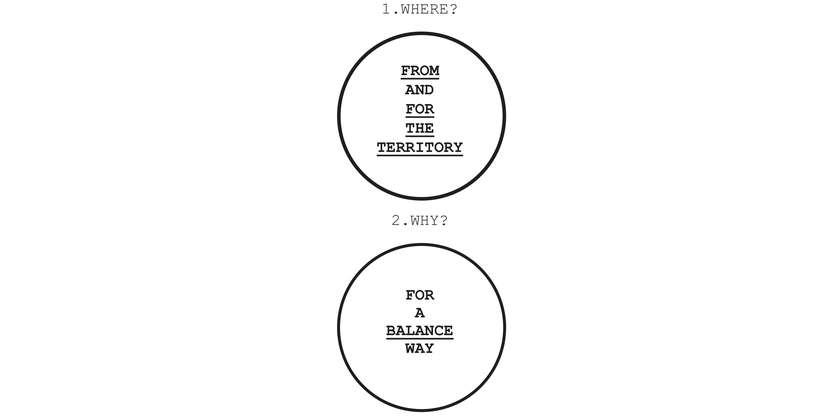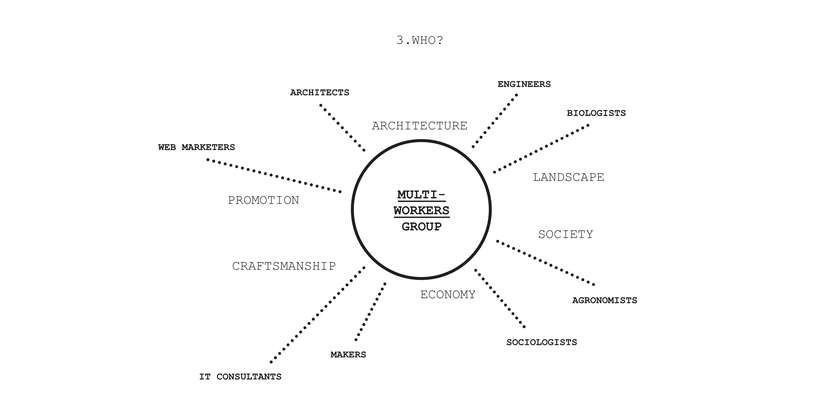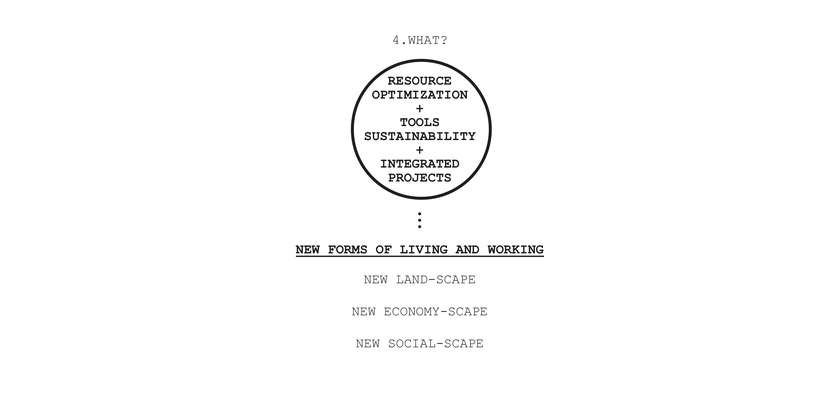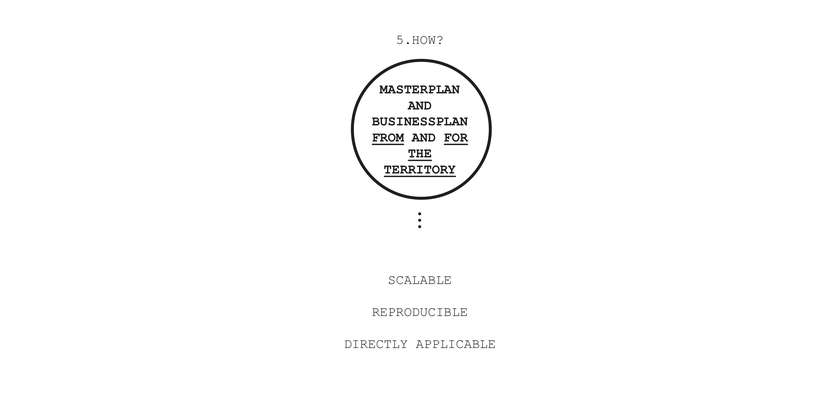Idea by
MANUELA SCHIRRA
Call for ideas 2017
Re-Balance
Re-Balance
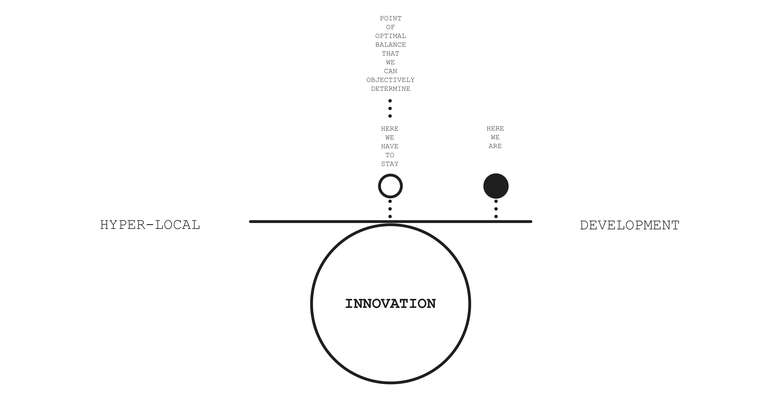
We need to re-start FROM and FOR the TERRITORY. Territory like collectivity, culture, know-how, memories, identity, tradition and climate.
Looking to the HYPER-LOCAL and to the contemporary TECHNOLOGY we have to intercept innovative solutions for the PRESENT and for the FUTURE.
We have to BALANCE the HYPER-LOCAL conditions with the human aspiration to the DEVELOPMENT and the progress.
The INNOVATION has to start from the HYPER-LOCAL.
In this environmental strategy the human aspiration is the dynamic energy that we have to use for UPGRADE THE TECHNOLOGY and PRESERVE THE CULTURE and THE CLIMATE.
The architecture can do it. The architecture have to design now NEW FORMS OF LIVING and WORKING.
The architecture has to re-start the territory, hoping to the balance and the symbiosis. That is bioclimatic, landscape urbanism, social living, new economy, social business and co-working. That is re-innovation of building, urban-scape and land-scape. That is RE-BALANCE.
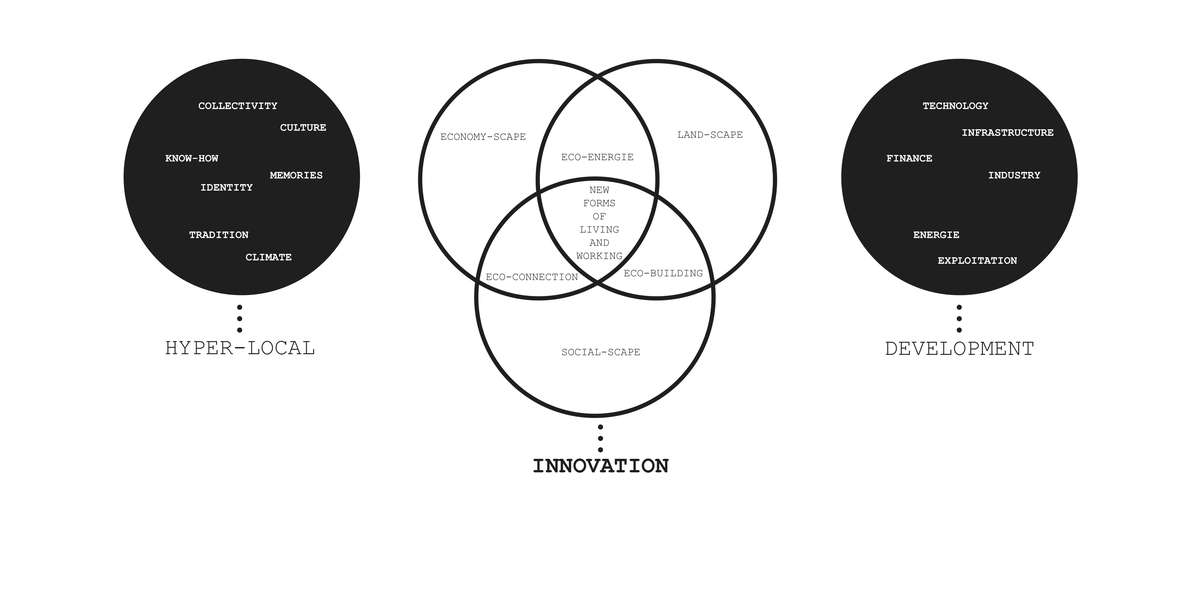
The INNOVATION starts from the sphere of ECONOMY-SCAPE, LAND-SCAPE and SOCIAL-SCAPE.
In the interconnection of them we have to find NEW FORMS OF LIVING and WORKING adapted to the new and current lifestyle, even at the service of complex programs for urban and regional regeneration.
Globalization has separated the citizens from their local resources. In the place itself we have the richness. We have to find it.
The logic is to transform PROBLEMS INTO OPPORTUNITIES.
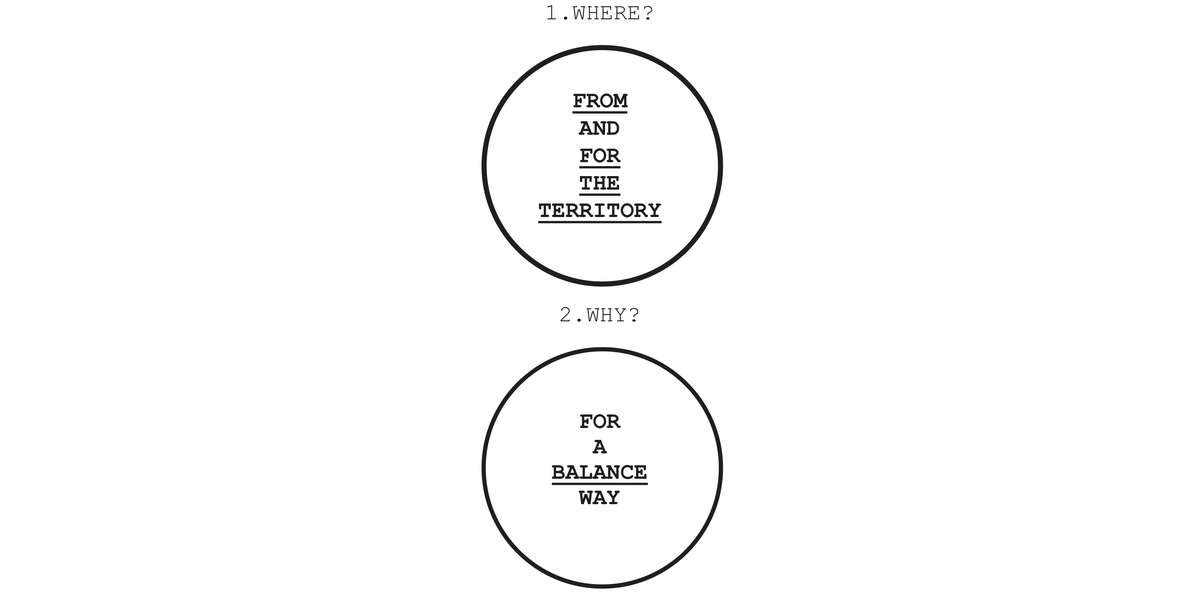
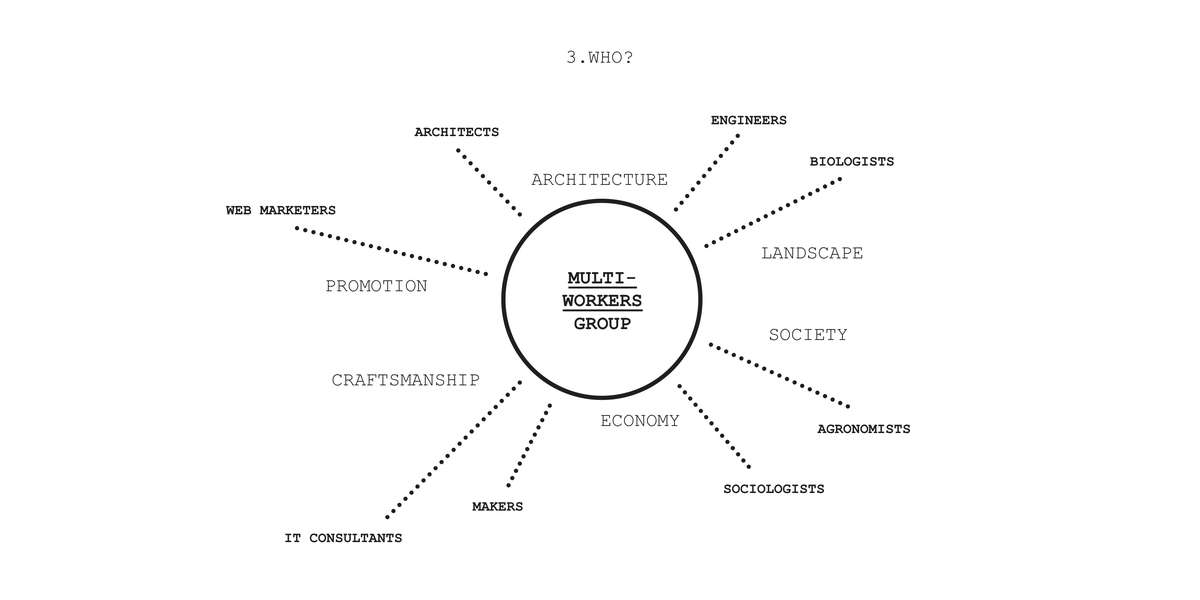
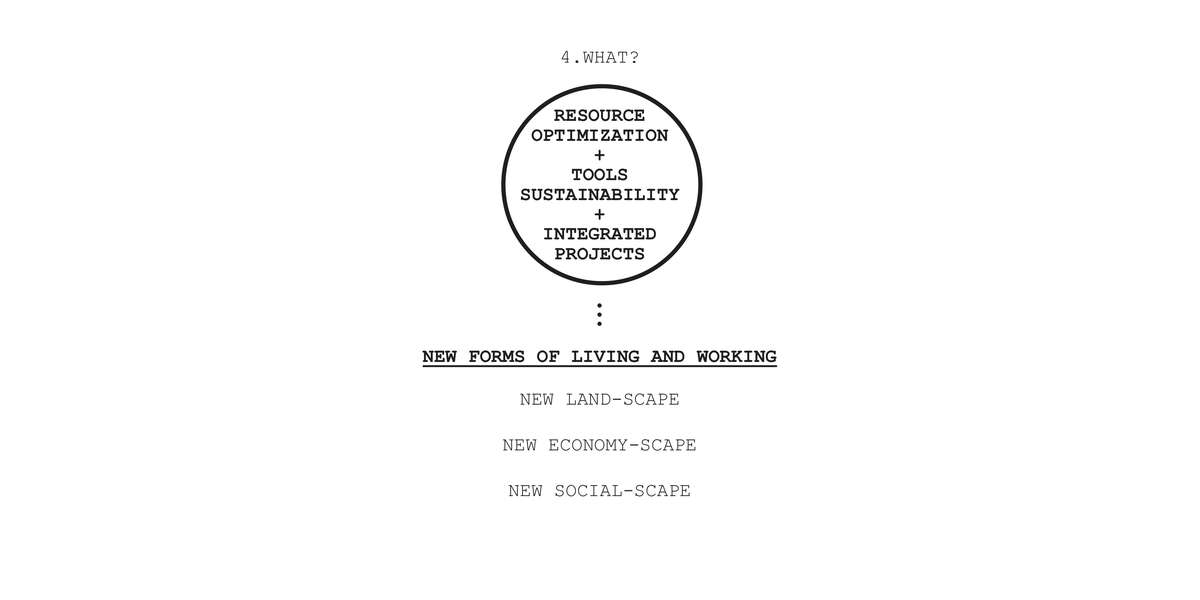
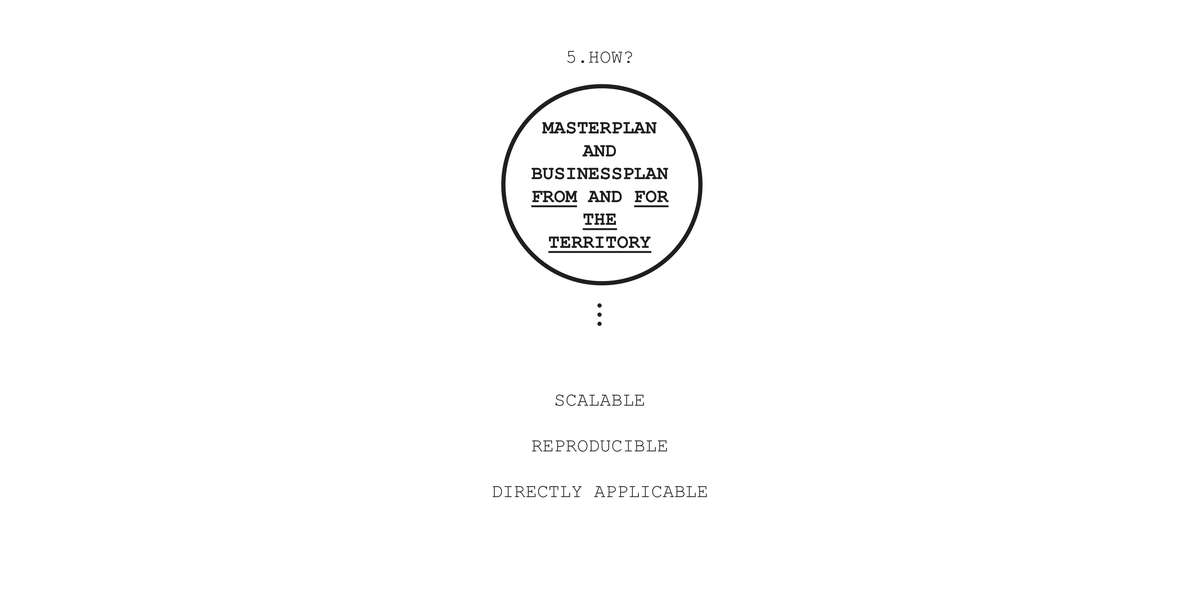
Re-Balance
Re-Balance

We need to re-start FROM and FOR the TERRITORY. Territory like collectivity, culture, know-how, memories, identity, tradition and climate.
Looking to the HYPER-LOCAL and to the contemporary TECHNOLOGY we have to intercept innovative solutions for the PRESENT and for the FUTURE.
We have to BALANCE the HYPER-LOCAL conditions with the human aspiration to the DEVELOPMENT and the progress.
The INNOVATION has to start from the HYPER-LOCAL.
In this environmental strategy the human aspiration is the dynamic energy that we have to use for UPGRADE THE TECHNOLOGY and PRESERVE THE CULTURE and THE CLIMATE.
The architecture can do it. The architecture have to design now NEW FORMS OF LIVING and WORKING.
The architecture has to re-start the territory, hoping to the balance and the symbiosis. That is bioclimatic, landscape urbanism, social living, new economy, social business and co-working. That is re-innovation of building, urban-scape and land-scape. That is RE-BALANCE.
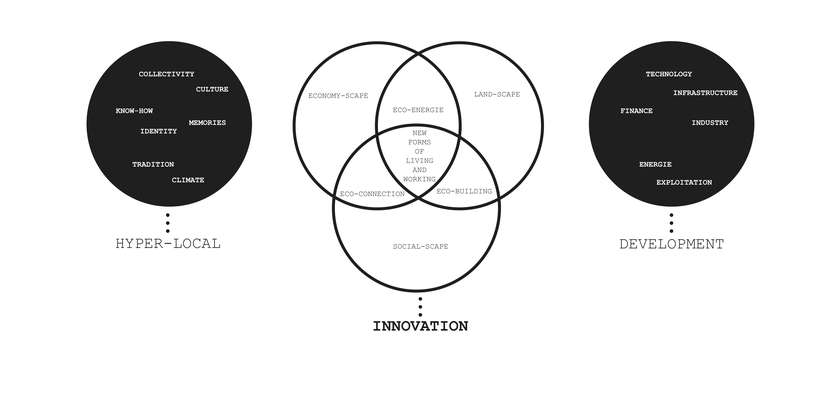
The INNOVATION starts from the sphere of ECONOMY-SCAPE, LAND-SCAPE and SOCIAL-SCAPE.
In the interconnection of them we have to find NEW FORMS OF LIVING and WORKING adapted to the new and current lifestyle, even at the service of complex programs for urban and regional regeneration.
Globalization has separated the citizens from their local resources. In the place itself we have the richness. We have to find it.
The logic is to transform PROBLEMS INTO OPPORTUNITIES.
